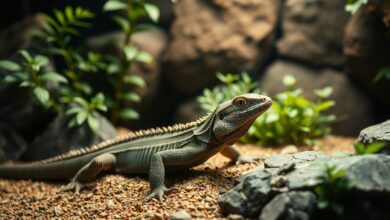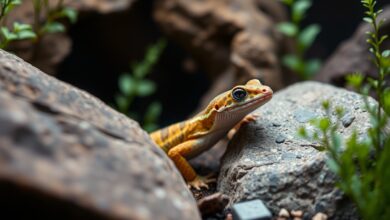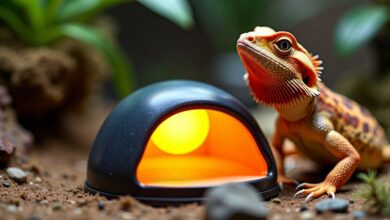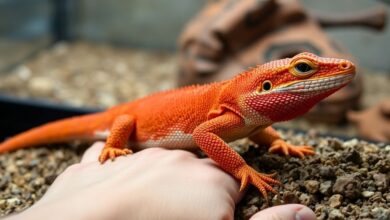How Long Does a Savannah Monitor Lizard Get? Size, Growth, and Care Insights
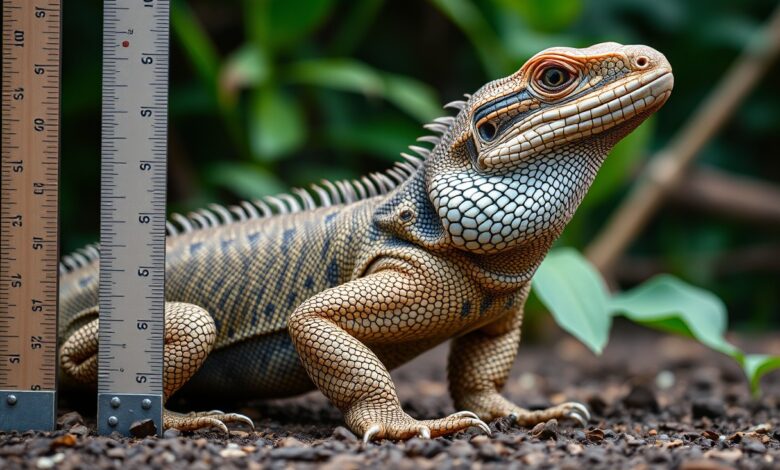
It’s imperative to understand the size and growth potential of your Savannah Monitor Lizard, as this will directly impact your care routines and habitat setup. These fascinating reptiles can grow significantly, often reaching lengths of up to 4 feet in captivity, depending on their diet and living conditions. Proper care, including appropriate space and nutrition, is vital for their health and well-being. In this post, you will gain valuable insights into their growth patterns and how to provide the best environment for your thriving companion.
Key Takeaways:
- Size: Savannah monitor lizards can grow to an impressive length of 4 to 5 feet, making them one of the larger species of monitor lizards.
- Growth Rate: These lizards typically experience rapid growth during their first few years, reaching their adult size within 2 to 3 years, depending on care and diet.
- Care Requirements: Proper care is crucial, including ample space, temperature regulation, and a diet rich in protein, to ensure their health and well-being.
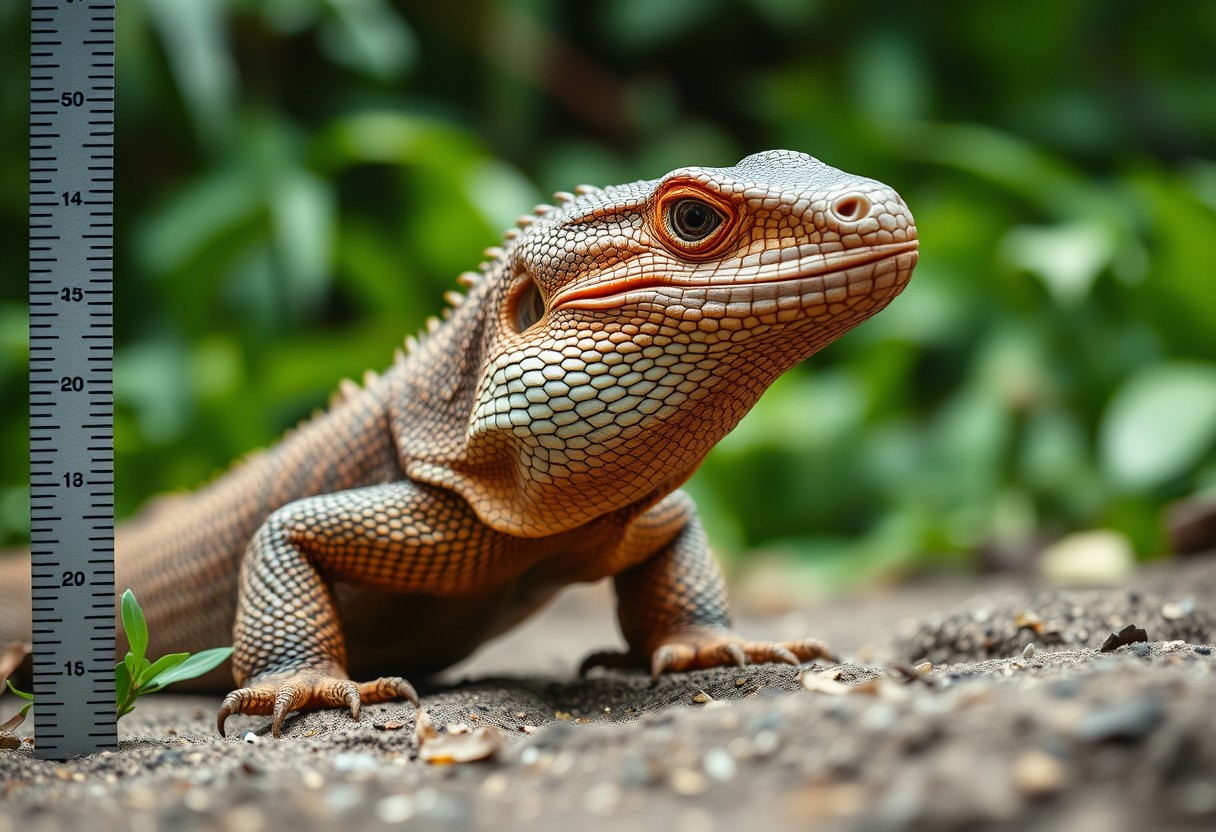
Size of Savannah Monitor Lizards
A Savannah monitor lizard is known for its impressive size and rugged appearance. Adult individuals typically reach notable lengths, making them one of the larger species in the monitor lizard family. Understanding their size is crucial for potential owners, as this impacts your care and habitat setup.
Average Adult Size
At maturity, Savannah monitor lizards can average between 3 to 4 feet in length. Some exceptional specimens may even exceed this range, showcasing the species’ ability to grow significantly when provided the right conditions. It’s important to prepare for their sizeable presence in your living space.
Factors Affecting Growth
Against the backdrop of predictable growth patterns, various factors can significantly impact the size of your Savannah monitor. These include:
- Diet quality
- Genetics
- Habitat size
- Temperature
- Overall health
Understanding these influences will help you create a conducive environment for optimal growth. Knowing the impact of these factors can lead to a healthier, more robust pet.
Even experienced keepers sometimes overlook the importance of providing a balanced diet rich in calcium and protein. A larger habitat allows your Savannah monitor to exhibit more natural behaviors, contributing to their physical health and overall well-being. Additionally, maintaining an appropriate temperature gradient ensures they can thermoregulate effectively, which is vital for growth. Knowing this can significantly enhance your reptile-keeping success.

Growth Stages of Savannah Monitor Lizards
The growth stages of Savannah monitor lizards are fascinating and necessary for understanding their development. These stages span from hatchlings to adults, requiring distinct care and management to ensure your lizard thrives as it grows. Proper attention during each phase will enhance your pet’s health and well-being.
Hatchling to Juvenile
Growth in this early stage is rapid, as hatchlings can reach around 10 to 12 inches in length within the first few months. During this period, it’s vital to provide an adequate diet rich in protein and sufficient heating to support their energy needs. The juvenile stage typically lasts about 6 months, and you’ll notice that your Savannah monitor becomes more active and curious as it matures.
Juvenile to Adult
Between 6 months to 2 years, your Savannah monitor will experience a significant growth spurt, reaching lengths up to 3 feet or more. The proper diet is still necessary, focusing on insects, rodents, and occasional fruits. As they transition to adulthood, you’ll need to adjust their habitat, providing more space and varied environmental enrichments to foster natural behaviors. Adequate supervision during this phase is important, as adult Savannah monitors can be more assertive and require a confident handler. With the right care, your monitor can live for over 15 years, making them a long-term commitment and rewarding companion.

Care Requirements
For effective care of your Savannah Monitor Lizard, it is crucial to provide a suitable habitat, proper diet, and socialization. You will need to ensure that their environment mimics their natural habitat, including temperature and humidity control, which is vital for their health. Additionally, a balanced diet rich in protein and calcium is necessary for their growth. Regular health checks and observation of their behavior will help you address any concerns promptly and ensure a long and healthy life for your pet.
Habitat Setup
About creating a habitat for your Savannah Monitor Lizard, you need to focus on providing ample space, heat, and humidity. A spacious enclosure with proper temperature gradients, including a basking area, is crucial. You should include substrates that allow for natural digging behaviour, as well as climbing branches and hiding spots to make your lizard feel secure.
Diet and Feeding
Above all, your Savannah Monitor Lizard’s diet plays a significant role in its growth and overall health. You should offer a variety of foods, including insects, rodents, and even some fruits and vegetables to ensure a balanced intake of nutrients.
Due to their primarily insectivorous nature, Savannah Monitor Lizards thrive on a diet rich in protein, consisting mainly of crickets, mealworms, and mice. It is crucial to provide a calcium supplement to prevent metabolic bone disease, which can be fatal. Be cautious of overfeeding, as it can lead to obesity and other health issues. Providing a variety of prey will not only keep your lizard interested but also help fulfill its nutritional needs, ensuring a healthy and vibrant pet.
Health Considerations
To ensure your Savannah Monitor remains healthy, you must focus on proper care, habitat conditions, and dietary needs. Regular vet check-ups are necessary to catch any potential health issues early and maintain your lizard’s well-being.
Common Health Issues
Among the most common health issues faced by Savannah monitors are metabolic bone disease, respiratory infections, and parasites. These conditions can manifest due to improper husbandry, including insufficient UVB exposure or poor dietary choices.
Preventive Care
An effective preventive care routine is vital for keeping your Savannah monitor healthy. This includes providing a balanced diet rich in nutrients, maintaining proper humidity and temperature levels in the habitat, and ensuring adequate UVB lighting. Regularly cleaning the enclosure helps avoid bacterial build-up that can lead to illness.
The foundation of good health lies in environmental stability and nutrition. Regular monitoring of your lizard’s behavior and physical condition can help you detect signs of distress early. Make sure to provide a varied diet that aligns with their natural foraging instincts, along with regular veterinary visits for check-ups and vaccinations. By prioritizing these aspects, you will foster a long, healthy life for your Savannah monitor.
Behavior and Temperament
Despite their sometimes fierce appearance, savannah monitors can exhibit a range of behaviors and temperaments. They are known to be curious and intelligent creatures, often requiring stimulation to prevent boredom. Frequent interactions and mental challenges are vital for their well-being. For more insights on growth rates and behavioral patterns, check out How fast do savannah monitors grow? : r/MonitorLizards.
Social Interactions
Beside being solo animals, savannah monitors can interact with humans and some may engage positively with their owners. However, social interactions should be approached carefully to avoid stress. Observing your monitor’s reactions will help determine their comfort level during these interactions.
Handling and Taming
On the other hand, handling and taming your savannah monitor requires patience and consistency. Initially, they may be skittish and defensive, so take your time to build trust. Always support their body and avoid sudden movements to prevent startling them.
Indeed, successful handling and taming of your savannah monitor involves understanding their behavior and being aware of their comfort zones. Start with brief interactions to build trust, gradually increasing the duration as they become more comfortable. Always use gentle movements and avoid holding them too tightly, as this can induce stress. A well-socialized monitor can become a rewarding companion, while a stressed one may exhibit defensive behavior. Being patient and allowing your monitor to adjust at their own pace will significantly improve your relationship.
Lifespan and Longevity
Not every Savannah monitor lizard will enjoy a long life, even in captivity. However, understanding their potential lifespan is important for you as a keeper. Generally, these reptiles can live 15 to 20 years with proper care, demonstrating how vital your role is in ensuring their well-being throughout their lives.
Expected Lifespan in Captivity
Behind the walls of a well-maintained terrarium, your Savannah monitor lizard has the potential to thrive and live significantly longer than their wild counterparts. In captivity, you can expect a lifespan ranging from 15 to 20 years, depending on the conditions you provide, including diet and habitat enrichment.
Factors Influencing Longevity
Longevity in Savannah monitor lizards can vary greatly depending on several factors, which include:
- Diet – A varied and nutritious diet contributes to overall health.
- Habitat – A clean, spacious, and properly heated enclosure is vital.
- Health Care – Regular veterinary check-ups can prevent and treat diseases.
The right environment and care can significantly enhance their lifespan.
Also, an understanding of the environment you create and the diet you provide will greatly influence how long your Savannah monitor lizard may live. Essential factors include:
- Stress Levels – A calm and stable environment minimizes health risks.
- Hydration – Adequate access to clean water supports their overall well-being.
- Social Interaction – Regular interaction can reduce stress and encourage activity.
The right balance and awareness can lead to a longer, healthier life for your pet.
To wrap up
With these considerations, understanding the size, growth, and care of a Savannah Monitor Lizard is important for your well-being and the lizard’s happiness. They typically reach lengths of 3 to 4 feet, requiring ample space and a suitable environment to thrive. As you plan for your lizard’s growth, ensure you provide proper nutrition and habitat enrichment to support their development. By investing time and effort into their care, you can enjoy a rewarding relationship with your Savannah Monitor, fostering a healthy and engaging environment for both of you.
FAQ
Q: How large can a Savannah Monitor Lizard grow?
A: Savannah Monitor Lizards typically reach an average length of 3 to 4 feet (0.9 to 1.2 meters) when fully grown. However, some individuals can exceed this range, reaching up to 5 feet (1.5 meters) in length. Their size may vary depending on factors such as genetics and environmental conditions. Proper care, including nutrition and habitat management, can influence their growth trajectory.
Q: What factors influence the growth rate of a Savannah Monitor Lizard?
A: Several factors play a significant role in determining the growth rate of a Savannah Monitor Lizard. These include diet quality, the temperature of their habitat, lighting conditions, and overall health. A nutritious diet high in protein, such as insects and small rodents, along with adequate basking spots and UV light, can promote healthy growth and development. Stress and illness can also negatively impact their growth, so maintaining a stable and clean environment is crucial.
Q: How can I provide proper care for a juvenile Savannah Monitor Lizard to support its growth?
A: Providing proper care for a juvenile Savannah Monitor Lizard involves creating a suitable habitat and supplying appropriate nutrition. Ensure the enclosure is spacious with climbing opportunities and hiding spots, maintaining a temperature gradient from warm to cool to facilitate thermoregulation. Provide a varied diet consisting of insects, rodents, and occasionally fruits or vegetables. Regularly monitor their health, clean the habitat, and offer fresh water. By implementing these tips, you can help support their growth and overall well-being.


